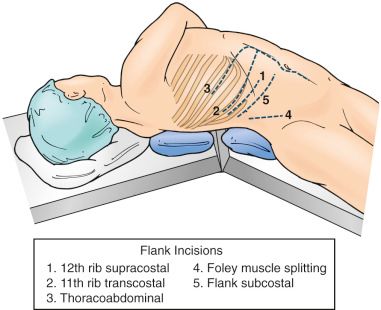Mitral Valve Replacement
-
Dunno. I learned it as bicuspid and that seemed to stick.
Amazing stuff, BTW.
Medicine has come a long way. Look at how they do a cholecystectomy nowadays, compared to thirty years ago...
-
@Jolly said in Mitral Valve Replacement:
Look at how they do a cholecystectomy nowadays, compared to thirty years ago.
I hated gallbladders. One of the most painful of all operations, and one that impaired post-op respiratory function a lot.
@George-K I was just thinking today the during my residency I did only open gall bladders, my first lap chole i was well into training and did my first all alone after I had finished residency. and now I can’t even remember doing one open.
-
@Jolly said in Mitral Valve Replacement:
Look at how they do a cholecystectomy nowadays, compared to thirty years ago.
I hated gallbladders. One of the most painful of all operations, and one that impaired post-op respiratory function a lot.
@George-K said in Mitral Valve Replacement:
@Jolly said in Mitral Valve Replacement:
Look at how they do a cholecystectomy nowadays, compared to thirty years ago.
I hated gallbladders. One of the most painful of all operations, and one that impaired post-op respiratory function a lot.
Mrs. George saw a cardiologist yesterday. He wanted to get a long-term view of her cardiac rhythm (nothing serious) so he order a "Holter monitor."
(geezer here)
Back "in the day," the Holter was a bunch of electrodes wired into a box, about the size of a hardback book. The box weighed a couple of pounds, and you slung it over your shoulder. You wore it for several days, during which bathing was ... problematic.
The device she got yesterday is self-contained, and adheres to the chest wall. It's about 2 inches long, an inch wide and stays there for two weeks. She can shower with it, but they say don't submerge it or pour water directly on it. After two weeks, put it in a box and mail it in.
Amazing, brave new world.
-
@George-K said in Mitral Valve Replacement:
@Jolly said in Mitral Valve Replacement:
Look at how they do a cholecystectomy nowadays, compared to thirty years ago.
I hated gallbladders. One of the most painful of all operations, and one that impaired post-op respiratory function a lot.
Mrs. George saw a cardiologist yesterday. He wanted to get a long-term view of her cardiac rhythm (nothing serious) so he order a "Holter monitor."
(geezer here)
Back "in the day," the Holter was a bunch of electrodes wired into a box, about the size of a hardback book. The box weighed a couple of pounds, and you slung it over your shoulder. You wore it for several days, during which bathing was ... problematic.
The device she got yesterday is self-contained, and adheres to the chest wall. It's about 2 inches long, an inch wide and stays there for two weeks. She can shower with it, but they say don't submerge it or pour water directly on it. After two weeks, put it in a box and mail it in.
Amazing, brave new world.
@George-K said in Mitral Valve Replacement:
@George-K said in Mitral Valve Replacement:
@Jolly said in Mitral Valve Replacement:
Look at how they do a cholecystectomy nowadays, compared to thirty years ago.
I hated gallbladders. One of the most painful of all operations, and one that impaired post-op respiratory function a lot.
Mrs. George saw a cardiologist yesterday. He wanted to get a long-term view of her cardiac rhythm (nothing serious) so he order a "Holter monitor."
(geezer here)
Back "in the day," the Holter was a bunch of electrodes wired into a box, about the size of a hardback book. The box weighed a couple of pounds, and you slung it over your shoulder. You wore it for several days, during which bathing was ... problematic.
The device she got yesterday is self-contained, and adheres to the chest wall. It's about 2 inches long, an inch wide and stays there for two weeks. She can shower with it, but they say don't submerge it or pour water directly on it. After two weeks, put it in a box and mail it in.
Amazing, brave new world.
But...be careful. I wore one of those for a week and had a really nasty rash pop up. Don't know if it was latex allergy or not, but a nice reaction, just the same...
-
While we're on the subject and Bach has wandered by...Wife's uncle has a mass on his L kidney and while the tests are not all done, the GU guy thinks it's cancer and wants to remove the kidney.
Laproscopically.
I'm ignerant. What's the length of incision and what does recovery look like?
-
While we're on the subject and Bach has wandered by...Wife's uncle has a mass on his L kidney and while the tests are not all done, the GU guy thinks it's cancer and wants to remove the kidney.
Laproscopically.
I'm ignerant. What's the length of incision and what does recovery look like?
@Jolly laparoscopic nephrectomy is a thing, and probably the most common way to address a renal tumor.
If I recall, you're looking at 4-5 incisions each of them about 2-4 cm long for port access. If the kidney is taken out in one piece (as it probably should be for a tumor), one incision will be enlarged to allow delivery of the kidney - probably about 8 cm or so.
Recovery is a nothing-burger. Incisional pain, and that's about it. Beats the old-fashioned flank incision bigly.

Positioning for an open nephrectomy was a PITA - all kinds of hemodynamic compromise. Not to mention respiratory. And then, on occasion, the surgeon would drop the up-lung. Good times....
-
After her series of mini strokes, Mrs. Mark had a heart monitor implanted in her chest that monitored her heart 24/7 for over two years.
It even had an app for her phone that transmitted the data to the cardiologist every week or so.
@mark said in Mitral Valve Replacement:
After her series of mini strokes, Mrs. Mark had a heart monitor implanted in her chest that monitored her heart 24/7 for over two years.
It even had an app for her phone that transmitted the data to the cardiologist every week or so.
Yep, they have pacemakers that can even be adjusted over the phone now...
-
At the end of my career, TAVR was just coming into common practice. In the right patients, it can be transformative. Aortic valve stenosis is characterized by three symptoms, which may or may not, occur at the same time.
- Chest pain
- Heart failur
- Sudden death
So, it should be addressed if any of these symptoms occur.
With TAVR, the need for "open heart" surgery is eliminated and the procedure is done percutaneously by feeding a catheter which is attached to a device that holds the replacement valve.
Amazing shit.
Now, I see that it can be done with a mitral valve as well. I can see how this would be MUCH more difficult, considering the anatomy and the number of turns you'd have to make to get across the mitral valve with what appears to be a clunky device.
Nevertheless...
(Trivia time: Why is it called the "mitral" valve?)
@George-K said in Mitral Valve Replacement:
At the end of my career, TAVR was just coming into common practice. In the right patients, it can be transformative. Aortic valve stenosis is characterized by three symptoms, which may or may not, occur at the same time.
Chest pain
Heart failur
Sudden deathSo, it should be addressed if any of these symptoms occur.
@George-K I had to laugh at #3. It is too late at that point. 555
-
@George-K said in Mitral Valve Replacement:
At the end of my career, TAVR was just coming into common practice. In the right patients, it can be transformative. Aortic valve stenosis is characterized by three symptoms, which may or may not, occur at the same time.
Chest pain
Heart failur
Sudden deathSo, it should be addressed if any of these symptoms occur.
@George-K I had to laugh at #3. It is too late at that point. 555
@taiwan_girl said in Mitral Valve Replacement:
I had to laugh at #3. It is too late at that point.
Sadly, it can be the first symptom.
